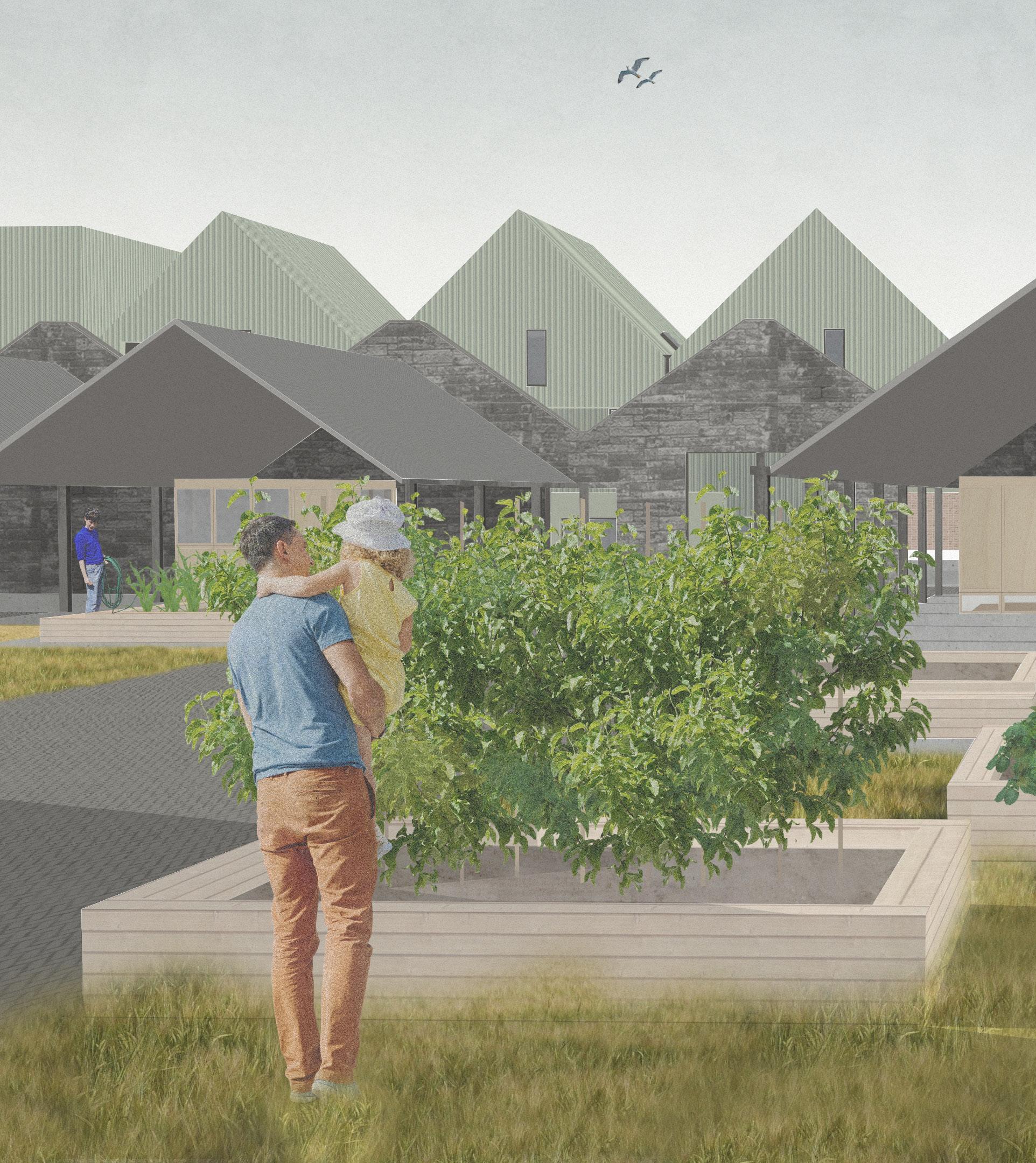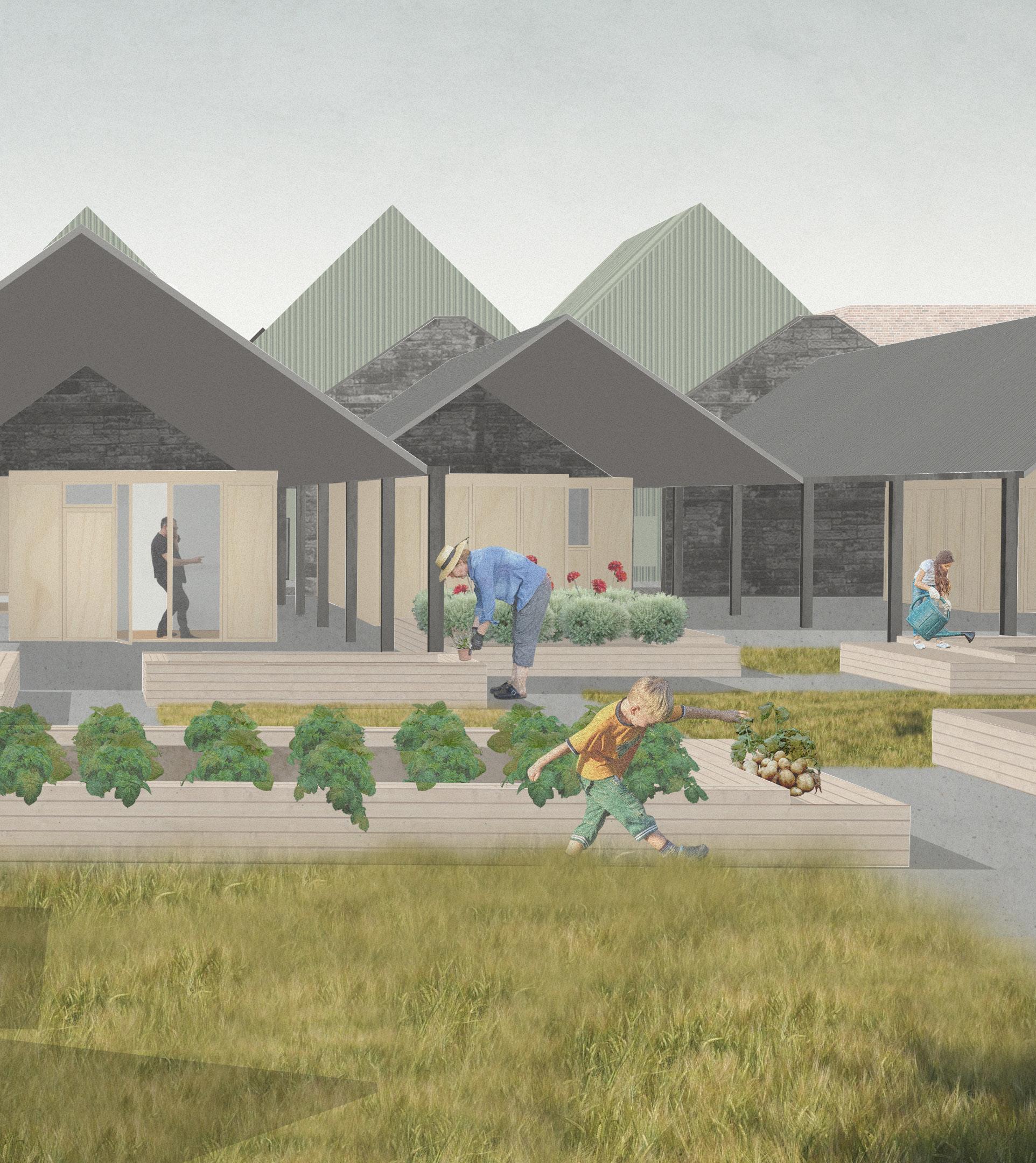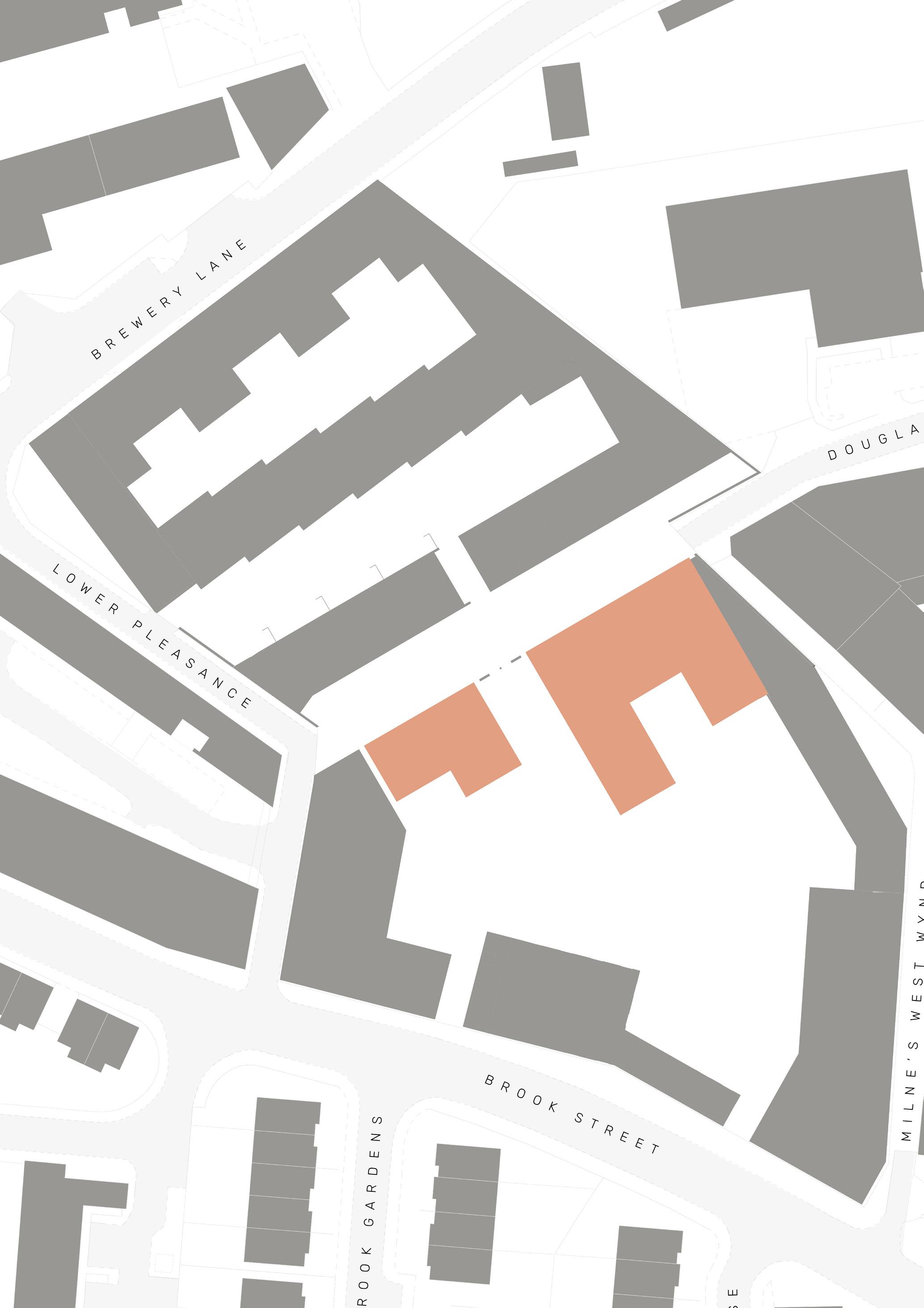
4 minute read
Burgage Studios
WHERE COMMUNITY COMES TOGETHER
‘‘gardening is also a social act, especially in dense cities’’ - Charles Montgomery
Advertisement
With reference taken from the historic burgage plots of
Dundee [see pages 27/28 of Studio E Dundee Booklet] and the adaptable and linear principle, the burgage studios are formed.
This area of the site is where the community within and from the surrounding area really come together and are encouraged to mix. By creating a steel rainwater structure, the historic structure is celebrated with the addition of dealing with rainwater and sunlight sustainably.
With the roof made up of louvred panels, the structure can react to weather conditions, opening up when it is sunny and closing off when it rains to collect the water and protect users below.
Similar to a flower opening when it is bright and turning towards the sun, the building has a hidden connection to nature.
The white grid below shows the 5m structural lines which are extended across the site, with the darker hatched zones representing where building would be. The spaces in between act as contemporary vennels (historic to Scottish architecture) which buffer pedestrians from the pedestrian street to the enclosed public courtyard to the south and vice versa.

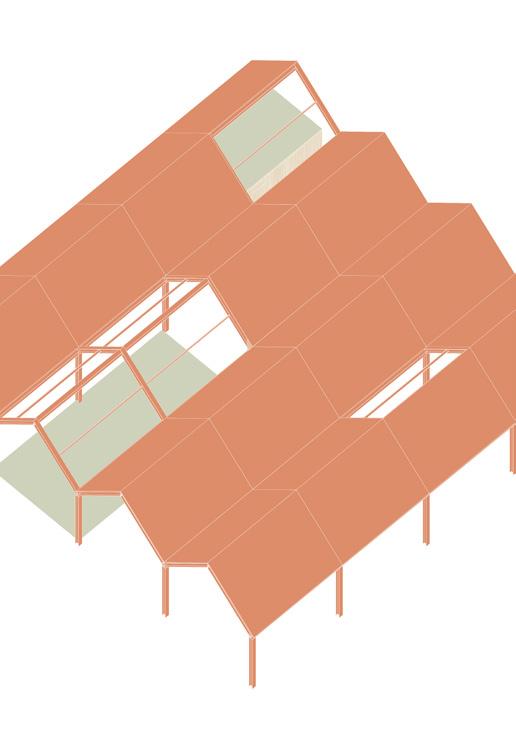
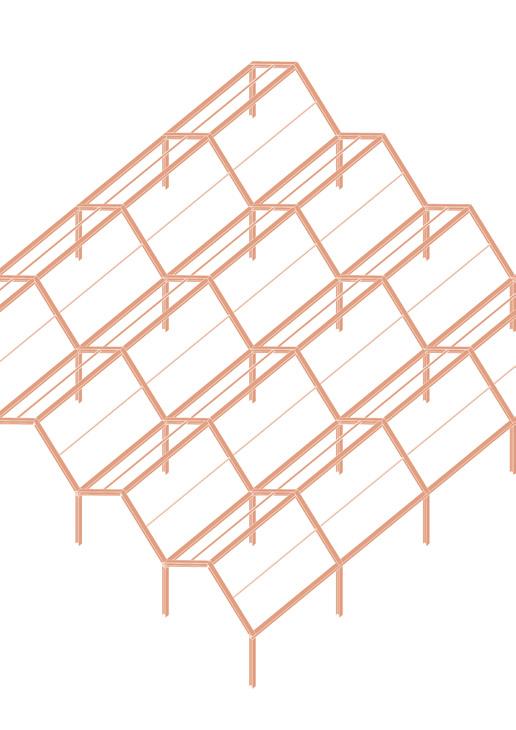
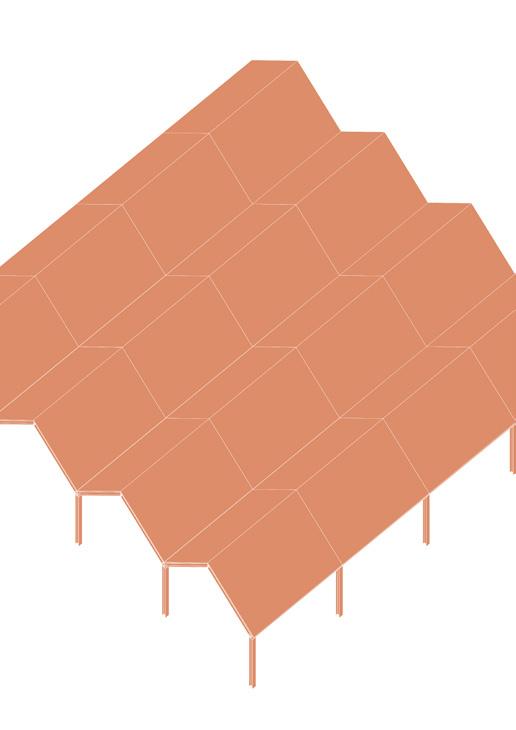
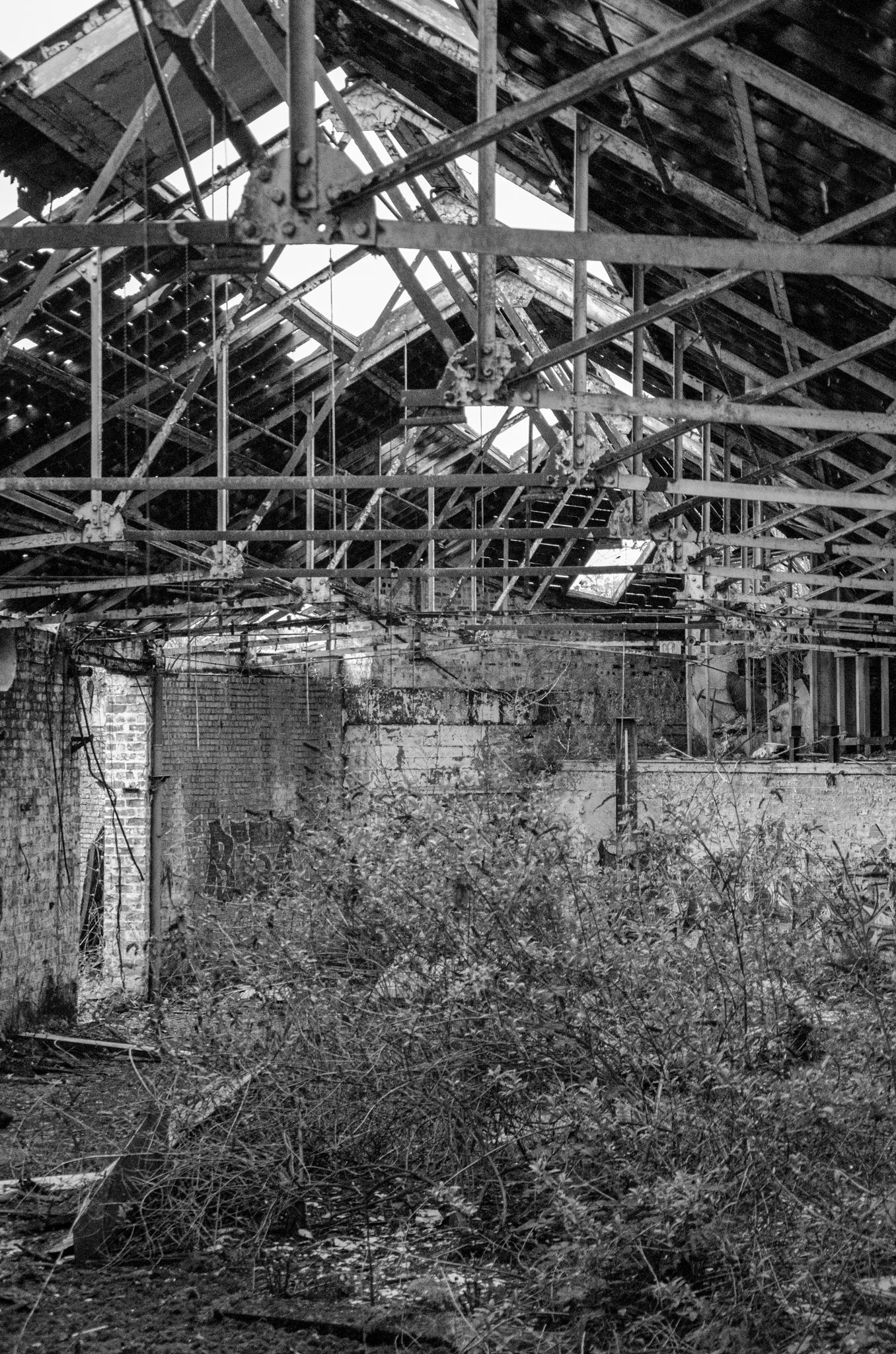
PROCESS OF UNIT DEVELOPMENT
1. CLIENT [interest]
DETAIL
It is a council led scheme to encourage start up/ small businesses as per business place plan so a client (artist/small community business)would approach the council about constructing a unit.
Client works up simple unit design from the list of modular sized panels. The cost is £1000 p/m2.
Information gets sent to manufacturer who make number of panels required for intended design.
Ease of constructions means that contractor is not required to pass on cost savings and allows client construct unit themselves.
2. INITIAL FEASIBILITY [unit size + shape]
3. PRODUCTION [manufacturing of panels]
4. CONSTRUCTION [delivery + time to build to be agreed with client]
5. FITOUT [any additional fittings added + connected as appropriate]
6. MOVE IN [client opens office/art studio/meeting studio] Additional fitting (such as kitchenettes) added and connected to water supply tank/appropriate connection.
7. LEASE PERIOD [chosen monthly payment plan]
8. BUY OVER OPTION [client decision once paid full amount]
9. RECYCLING/REUSE [afterlife of unit] Client moves in and start using space, whether it is just for them or community workshops etc.
The idea is that it is a buy to rent unit, so the client will agree on a contract which suits them in which the full amount has to be paid by.
Once final payment is made, the client has the decision whether to keep the unit, alter it or sell as is/sell panels back to manufacturer to be reused
on site. [If panels are to be reused they would need checked for any damages and repaired where appropriate before another client purchased.]
Process is repeated.
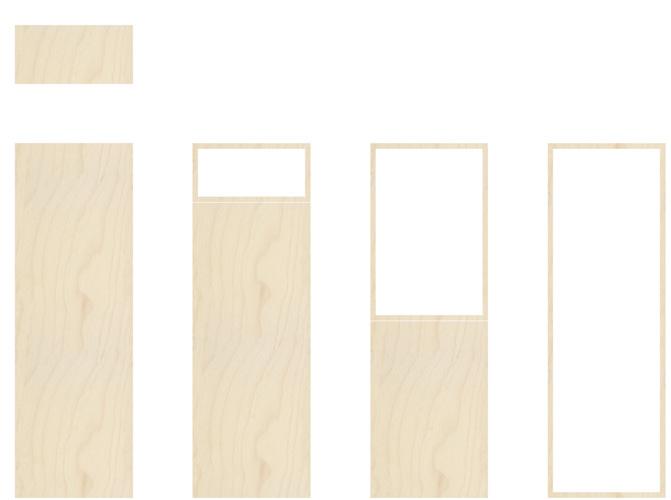
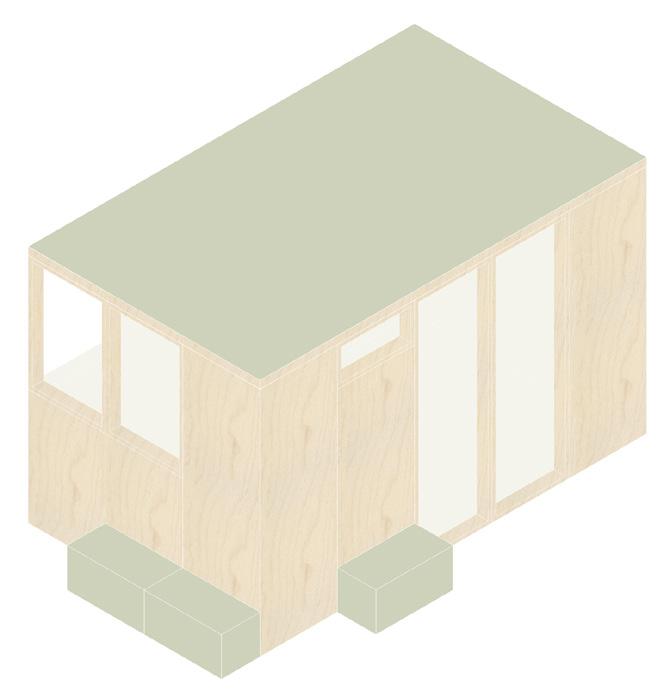
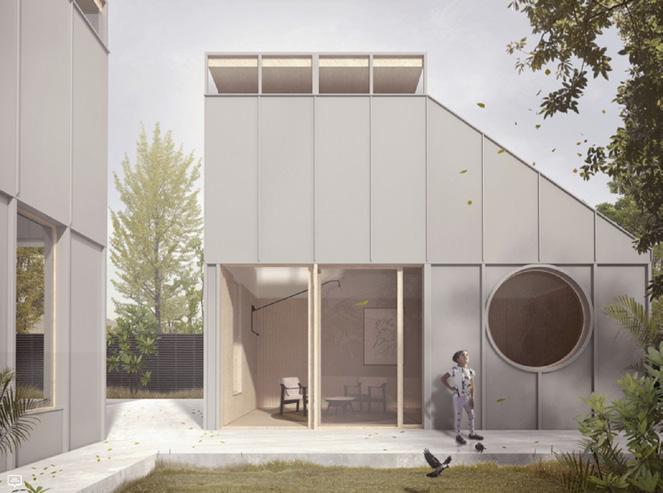
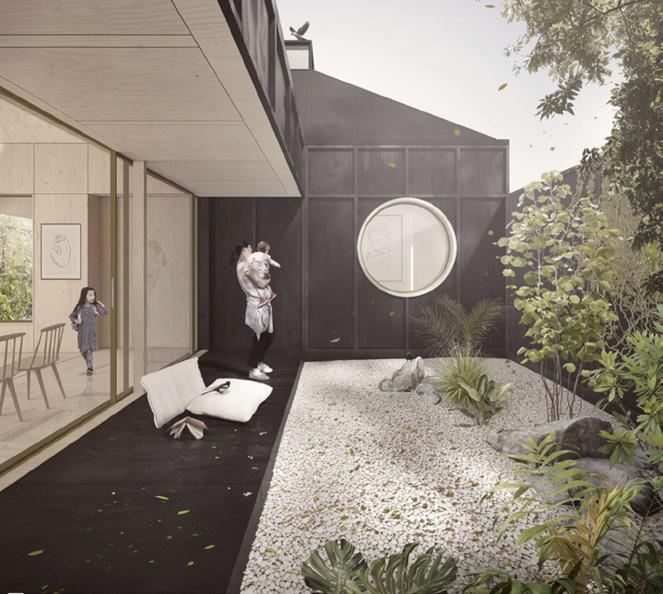
Figure(s) 18 : Phabb MODU modular housing, Morris + Company
Dundee has more allotments than visitors and existing community might realise, however the council also have an agenda to create more. With 612 existing plots, there is a still a large waiting list of individuals wanting to grow their own fruit and veg, so introducing another allotment that is closer to the city would only be encouraged.
The map to the right shows the current allotments and their location (with some off the map) which the council are responsible for in dark green and the others which are leased by private owners from the council in the lighter green.
With the release of Dundee City Council’s ‘Allotment Strategy 2010-2015’ document, there has been an improvement in available plots but with the population rising, and this proposal being part of that, there will always be a requirement for more.
For meeting the demand for allotments, DCC have stated that one of their actions to do this is to ‘‘Regularly assess the
number of plots within the City and monitor regularly the demand and waiting lists for them.’’ [page 4] So with this and the fact that the document is reviewed itself every 5 years shows how there is a push for encouraging allotments, giving a valid reason for introducing them to this micro-community proposal.
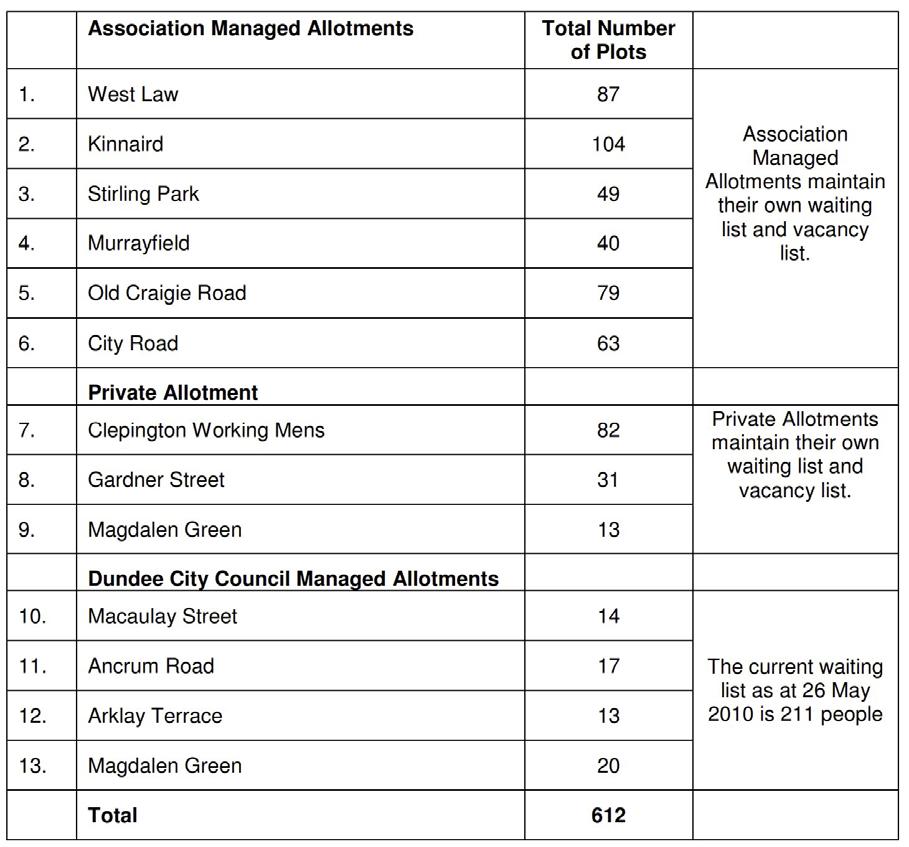
Figure 19 : Table from Dundee City Council’s Allotment Strategy (20102015) document
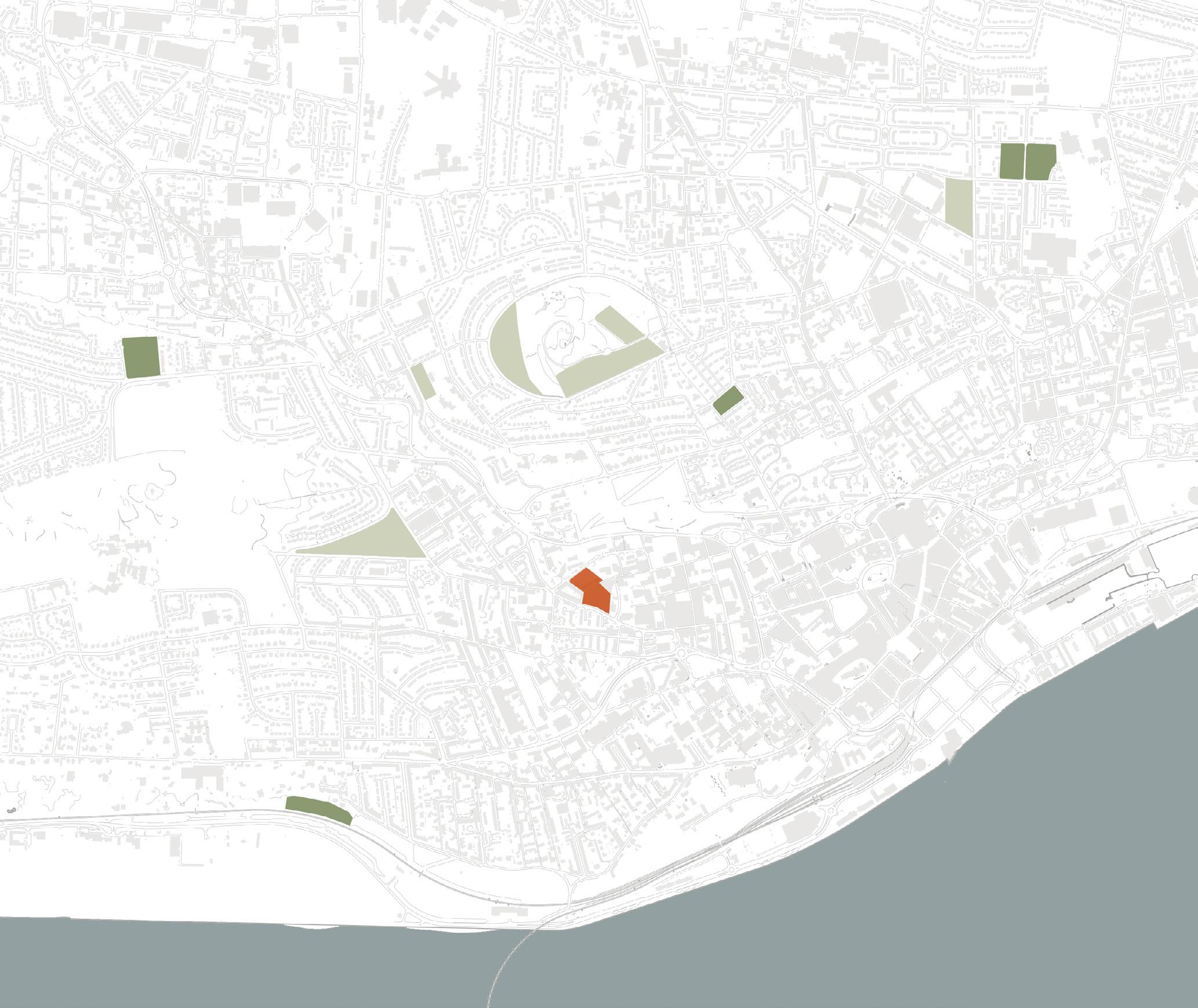
- Charles Montgomery, Happy Cities [pg 125]
